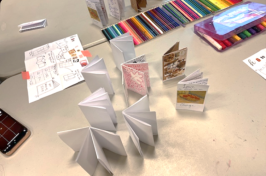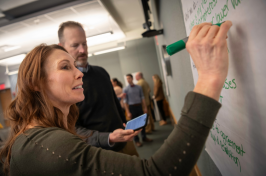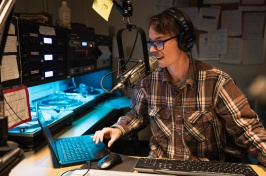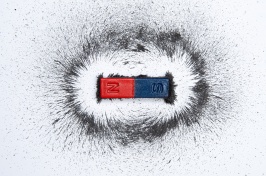New Simpler and Cost-Effective Forensics Test Helps Identify Touch DNA
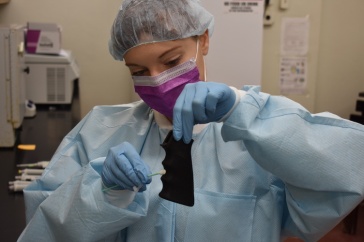
Samantha McCrane of UNH’s Forensic Anthropology Identification and Recovery (FAIR) Lab swabs a gun grip to look for trace DNA during study trials with a less expensive and easy to use DNA test.
DURHAM, N.H. — Television dramas, like CSI and NCIS, make criminal investigations look easy. In real life, DNA testing can be challenging and requires expensive equipment, special facilities and extensive training to identify DNA from a crime scene and determine which belongs to a potential suspect and which may have been transferred from someone who was never there. Research from the University of New Hampshire has found a less expensive and easier to use test to learn more about forensic touch DNA. This research has important implications for forensic investigations and being able to identify DNA from a primary contact—someone who may have committed the crime—as well as secondary DNA that was inadvertently and indirectly transferred through touch.
“So-called ‘touch DNA’ is a form of trace DNA that is deposited when a person touches something and leaves behind their skin cells, sweat or other fluids that contain their DNA,” said Samantha McCrane, a lecturer in anthropology and co-director of UNH’s Forensic Anthropology Identification and Recovery (FAIR) Lab. “While touch DNA is often the result of direct contact, which we call primary transfer, it can also be indirectly transferred between surfaces or individuals, leaving behind secondary or even tertiary DNA.”
In their study, recently published in the Journal of Forensic Sciences, researchers developed an innovative test that uses a more accessible and affordable sequence method, known as qPCR. To test their protocol, they paired male and female volunteers and kept it simple, only looking at one marker to determine the sex of the DNA. In the trials, they first had a male participant hold a gun grip for 30 seconds before placing it down on a sterilized table. Then, a female picked up the same gun grip and held it for 30 seconds and followed that by grasping a coffee cup for 30 seconds. Afterward, the gun grip, coffee mug and female's hand were all swabbed for DNA.
The findings with the new method found male and female DNA on the gun grip in 71% of the trials indicating primary transfer since both participants directly touched the gun grip. Male DNA was found on the female's hand in 50% of the trials representing secondary transfer since the DNA was transferred indirectly from the gun grip. Male DNA on the coffee mug was recorded 27% of time indicating tertiary, or third level, transfer since the DNA was indirectly transferred from the gun grip to the female's hand and finally to the coffee mug.
“The challenge with transfer DNA is that it opens up the dangerous possibility of DNA ending up on items or victims at a crime scene that a person may not have touched” said McCrane. “This has occurred in multiple cases, leading to innocent individuals being charged for crimes they didn't commit.”
The study also looked at the potential effects of age, ethnicity and skin conditions on DNA transfer. Ethnicity and age did not appear to affect touch DNA deposits and the small sample of those with sloughing skin conditions, like eczema, did not show any significant association with primary DNA transfer.
Researchers say even DNA experts cannot distinguish between different types of DNA transfer and this understudied field lacks enough data to fully understand which variables affect direct versus indirect DNA transfer and how often it happens. These new study results contribute to a better understanding of the conditions under which secondary and tertiary DNA transfer occurs and researchers are hopeful this new inexpensive protocol could lead to more research allowing for greater sample sizes and replication runs.
Co-author on the study was Connie Mulligan, professor of anthropology at the University of Florida.
The University of New Hampshire inspires innovation and transforms lives in our state, nation and world. More than 16,000 students from 49 states and 82 countries engage with an award-winning faculty in top-ranked programs in business, engineering, law, health and human services, liberal arts and the sciences across more than 200 programs of study. A Carnegie Classification R1 institution, UNH partners with NASA, NOAA, NSF, and NIH, and received over $210 million in competitive external funding in FY23 to further explore and define the frontiers of land, sea and space.
IMAGES FOR DOWNLOAD
Link: https://www.unh.edu/unhtoday/sites/default/files/lab2.jpg
Caption: Samantha McCrane of UNH’s Forensic Anthropology Identification and Recovery (FAIR) Lab swabs a gun grip to look for trace DNA during study trials with a less expensive and easy to use DNA test.
Photo credit: UNH
Link: https://www.unh.edu/unhtoday/sites/default/files/lab1.jpg
Caption: The handle of a gun is swabbed to search for trace DNA using a new less expensive and easy to use DNA test.
Photo credit: UNH
Latest News
-
November 6, 2025
-
November 5, 2025
-
October 24, 2025
-
October 8, 2025
-
October 2, 2025

